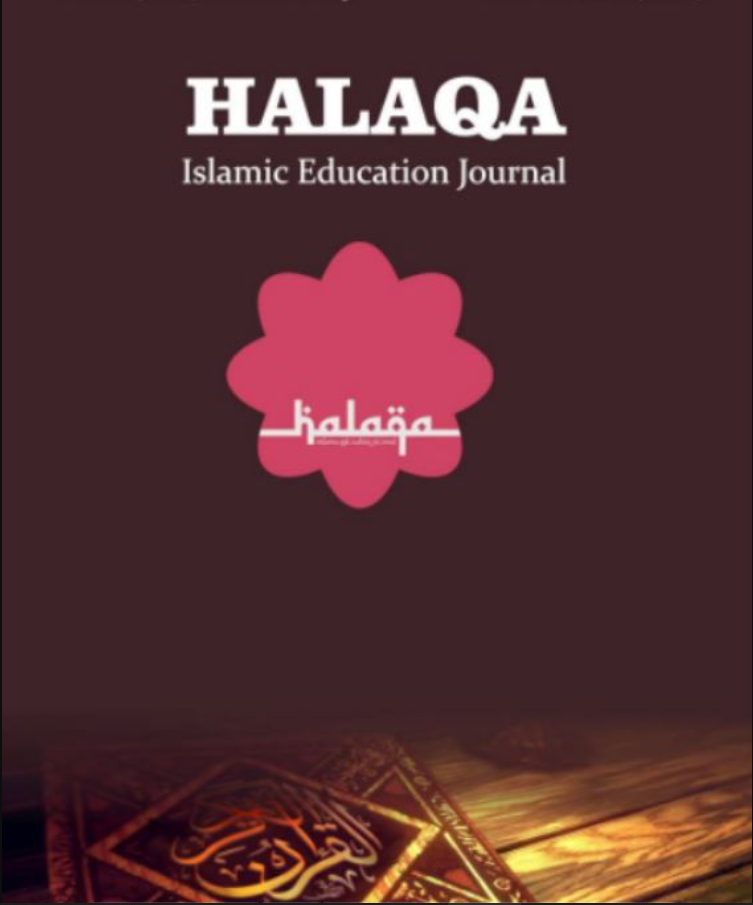Anti-Bullying Characters Based on Hadith: Controlling Your Mouth and Hands
Karakter Anti Bullying Berbasis Hadis: Mengendalikan Lisan Dan Tangan
DOI:
https://doi.org/10.21070/halaqa.v9i1.1710Keywords:
Anti-Bullying, Hadith, CharacterAbstract
The phenomenon of bullying in the educational environment continues to be a serious concern because of its detrimental impact on students' mental, social and spiritual development. From an Islamic perspective, bullying behavior is contrary to teachings that emphasize love, respect and protection of others. One of the important guidelines in building an anti-bullying character is the hadith of the Prophet Muhammad, which reads: "A Muslim is a person whose words and hands are safe from other people." This research aims to integrate the values contained in the Prophet's hadiths into students' character building strategies so that they have an anti-bullying attitude. This study employs qualitative and quantitative methods. In-depth interviews and text analysis provided qualitative data, while surveys provided quantitative data. Qualitative research shows that this hadith can guide character education programs, and quantitative research shows that 80% of students believe that understanding this hadith can prevent bullying, and 65% believe that hadith-based training can increase empathy. This hadith may be used to promote anti-bullying character education in schools in numerous ways. for example, by holding teacher training, compiling special modules and involving students in building anti-bullying character. The conclusion of this research confirms that hadith-based character education not only provides a solution to overcoming the problem of bullying, but is also an effort to form a generation that has high moral awareness and is able to maintain peaceful social relations.
Highlights:
- Hadith-Based Approach: The study highlights the importance of Islamic teachings, particularly the hadith, in fostering anti-bullying character education.
- Empathy Development: 65% of students believe that hadith-based training improves their empathy, reducing bullying behavior.
- Implementation Strategies: Schools can apply this approach through teacher training, special curriculum modules, and student involvement programs.
Keywords: Anti-Bullying, Character, Hadith
Downloads
References
Ahmed, N. (2017). Islamic ethics and bullying prevention. Journal of Islamic Education Research, 9(3), 24–38.
Al-Karim, A.-Q. (2019). Al-Qur’an dan terjemahannya. Departemen Agama Republik Indonesia.
Al-Bukhari, M. (1997). Shahih al-Bukhari. Dar al-Fikr.
Anwar, M. (2020). Pendidikan karakter dalam perspektif Islam: Membangun karakter anti-bullying. Jurnal Pendidikan Islam, 14(2), 102–115.
Aziz, A. (2020). Peran guru dalam mengajarkan hadis tentang pengendalian diri untuk mencegah bullying. Jurnal Pendidikan dan Pembelajaran Islam, 12(1), 23–38. https://doi.org/10.4321/jppi.v12i1.7788
Baldry, A. C., & Farrington, D. P. (2000). Bullies and delinquents: Personal characteristics and parental styles. Journal of Community & Applied Social Psychology, 10(1), 17–31. https://doi.org/10.1002/(SICI)1099-1298(200001/02)10:1
Craig, W. M., Pepler, D. J., & Atlas, R. (2000). Observations of bullying in the playground and in the classroom. School Psychology International, 21(1), 22–36. https://doi.org/10.1177/0143034300211002
Cross, D. (2011). School-based programs to reduce bullying and victimization. Campbell Systematic Reviews, 7(1), 1–147. https://doi.org/10.4073/csr.2011.8
Danesh, R. (2006). The Universal Declaration of Human Rights and Islam. Human Rights Quarterly, 28(3), 712–735.
Espelage, D. L., & Swearer, S. M. (2003). Research on school bullying and victimization. American Psychologist, 58(6), 344–353.
Farrington, D. P., & Ttofi, M. M. (2011). Effectiveness of programmes to reduce school bullying. The Lancet, 378(9803), 430–439. https://doi.org/10.1016/S0140-6736(11)60898-6
Fauzan, U., & Latifah, N. (2019). Integrasi hadis tentang menjaga tangan dalam pendidikan karakter di sekolah. Jurnal Pendidikan Karakter, 7(2), 89–104. https://doi.org/10.7890/jpk.v7i2.5566
Gini, G., & Pozzoli, T. (2009). Association between bullying and psychosomatic problems: A meta-analysis. Pediatrics, 123(3), 1059–1065. https://doi.org/10.1542/peds.2008-1215
Gohar, M. S., & Zain, M. (2018). Islamic principles for social harmony. International Journal of Islamic Studies, 3(2), 45–56.
Hamid, H. (2018). Hadis sebagai pedoman dalam membangun etika sosial anak. Jurnal Ilmu Pendidikan, 25(3), 50–63.
Hasan, S. (2019). Pentingnya pendidikan karakter dalam mencegah bullying di sekolah. Jurnal Pendidikan dan Pengajaran, 16(1), 45–58.
Hidayat, T. (2018). Pendidikan karakter anti-bullying melalui pemahaman hadis tentang menjaga lisan. Jurnal Ilmu Pendidikan Islam, 9(3), 33–47. https://doi.org/10.9101/jipi.v9i3.1121
Hinduja, S., & Patchin, J. W. (2010). Bullying, cyberbullying, and suicide. Archives of Suicide Research, 14(3), 206–221. https://doi.org/10.1080/13811118.2010.494133
Kokkinos, C. M., & Kipritsi, E. (2012). The relationship between bullying, victimization, trait emotional intelligence, self-efficacy, and empathy among pre-adolescents. Social Psychology of Education, 15(1), 41–58. https://doi.org/10.1007/s11218-011-9168-9
Kurniawan, H. (2020). Strategi pembelajaran hadis untuk mencegah perilaku bullying di sekolah. Jurnal Pendidikan dan Sosial Keagamaan, 13(2), 101–116. https://doi.org/10.7891/jpsk.v13i2.6677
Ma’ruf, A. (2021). Hadis tentang perlindungan terhadap kehormatan orang lain dan implikasinya dalam pendidikan anti-bullying. Jurnal Studi Islam dan Pendidikan, 8(2), 98–112.
Mulyadi, D. (2018). Efektivitas pendidikan anti-bullying berbasis hadis di sekolah menengah. Jurnal Studi Pendidikan Islam, 10(2), 99–114. https://doi.org/10.8765/jspi.v10i2.9900
Mulyasa. (2008). Kurikulum berbasis kompetensi: Konsep, karakteristik, dan implementasi. Remaja Rosdakarya.
Nurhayati, S. (2021). Pengaruh pemahaman hadis terhadap sikap anti-bullying di kalangan remaja. Jurnal Penelitian Pendidikan Islam, 14(1), 55–70. https://doi.org/10.2345/jppi.v14i1.3344
Olweus, D. (1993). Bullying at school: What we know and what we can do. Blackwell.
Qomar, M. (2005). Pendidikan Islam: Strategi membudayakan nilai-nilai Islam dalam dunia pendidikan. Erlangga.
Sari, R. (2021). Implementasi nilai-nilai hadis dalam membangun karakter siswa anti-bullying. Jurnal Pendidikan Islam Terapan, 5(1), 45–60. https://doi.org/10.3456/jpit.v5i1.2233
Slonje, R., & Smith, P. K. (2008). Cyberbullying: Another main type of bullying? Scandinavian Journal of Psychology, 49(2), 147–154.
Smith, J., & Lee, V. (2011). Bullying in cross-cultural perspective. Global Studies of Childhood, 1(2), 115–125.
Smith, P. K., & Brain, P. (2000). Bullying in schools: Lessons from two decades of research. Aggressive Behavior, 26(1), 1–9.
Sulaiman, M. (2022). Etika berbicara dalam Islam: Mencegah bullying melalui lisan. Jurnal Ilmiah Pendidikan Islam, 30(1), 75–87.
Suryadi, E. (2020). Pendidikan karakter berbasis Islam. Jurnal Pendidikan Islam, 5(2), 101–115.
Usman, H. (2014). Manajemen: Teori, praktik, dan riset pendidikan. Bumi Aksara.
Wahyudi, A. (2019). Penerapan hadis tentang menjaga lisan dalam pendidikan karakter di madrasah. Jurnal Ilmiah Pendidikan Islam, 8(3), 77–92. https://doi.org/10.6543/jipi.v8i3.4455
Downloads
Published
How to Cite
Issue
Section
License
Authors retain copyright and grant the journal right of first publication with the work simultaneously licensed under a Creative Commons Attribution 4.0 International License that allows others to share the work with an acknowledgement of the work's authorship and initial publication in this journal.







